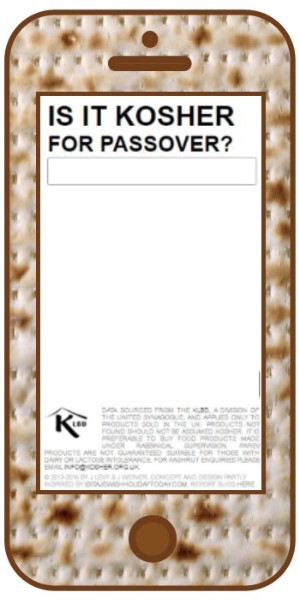Here are some basic guidelines for koshering your kitchen. If you need some assistance or have any questions please contact the KLBD office who will be able to help you.
Ovens
● Spray the oven with a caustic oven cleaner in order to loosen baked on grease. Leave the oven for the recommended time.
● Use steel wool or a scraper to remove any remaining stubborn spots.
● Make sure to clean in all the corners, door edges, behind the flame burners and the grooves of the rack shelves as well as the racks themselves.
● If the oven is self-cleaning, follow the manufacturer’s recommendations for the self-cleaning cycle. This will be sufficient to kasher the oven even where the oven has a convection fan. If the oven has a convection fan but not a self-cleaning cycle it will be necessary to remove the fan and thoroughly clean it using a caustic spray.
● Once cleaned, the parts should be replaced and the oven put on its highest setting for two hours.
● Cover the shelves with silver foil before use.
Gas Hobs
● Remove the grates and any removable parts and clean thoroughly using caustic spray if necessary. The removable parts, e.g. the drip pans and burner jets, do not need to be kashered.
● Once the grates have been cleaned they should be covered with a sheet of metal or large pot and the burners left on high for ten minutes. Caution should be taken that nothing surrounding the oven, including plastic control knobs, should melt. The knobs should be removed where possible.
● The metal area between the burners on the hob should be cleaned and then kashered by pouring boiling water onto it.
Electric Hobs
● Clean the coil burners thoroughly and turn them on to high until they glow red. The area between the burners should be kashered with boiling water.
Ceramic Hobs
● Ceramic hobs can be problematic in that only the burner area can be easily kashered (by putting them on high until they glow red), whereas the areas immediately adjacent cannot be kashered as they cannot get hot enough. Sheets of silica-bonded mica, recommended for covering ceramic hobs, are available from:
Shutlers
Temple Fortune Parade
Bridge Lane
London NW11 0QN
Tel: 020 8458 5649
Cutlery
● One piece of metal cutlery can be kashered without any problem. Cutlery with separate handles can only be kashered if the handle is firmly attached and there are no crevasses where food particles might be lodged.
● Thoroughly clean the cutlery and wait 24 hours since last use before kashering.
● Boil water in a kosher pot and insert each piece of cutlery. Ensure that the water comes in contact with all surfaces and continues boiling for the duration of the kashering process. It may be helpful to use tongs or a string bag for this process as long as water covers all parts of the cutlery.
● Larger items can be inserted, each half at a time. The important thing is that each part of the item being kashered is fully inserted at some point.
● After kashering, rinse the cutlery in cold water.
Pots
● Thoroughly clean the pots and wait 24 hours since their last use before kashering.
● If the pot being kashered is small it can be inserted into boiling water using the method described for cutlery.
● If the pot is too large for this method, it should be filled to the top with water and brought to the boil. When the water has boiled, pour boiling hot water from a kettle into the pot so that the water overflows. This is in order to kasher the rim.
● Baking trays, frying pans, Teflon and enamel coated pots cannot be kashered.
● After kashering, the pots should be rinsed with cold water.
Sink
● China, porcelain and corian sinks cannot be kashered but rather bowls, one for meat and one for milk should be used instead.
● Metal and granite sinks should be thoroughly cleaned and not used for hot liquids for 24 hours before kashering.
● Boiling water should then be poured over all parts of the sink including the plug hole and the taps.
● After kashering, the sink should be rinsed with cold water.
Work Surfaces
● It is questionable whether work surfaces made of synthetic materials can be kashered. For temporary use these surfaces should be cleaned and covered. For permanent use consult with the Beth Din or a competent halachic authority.
● Stone surfaces can be kashered as long as they are not composites.
● Surfaces that can be kashered like stone, metal and wood (only with smooth surface) should be kashered with the same procedure as kashering a sink, including rinsing off with cold water after the kashering procedure.
Fridges and Freezers
● Fridges and freezers should be thoroughly cleaned before use.




